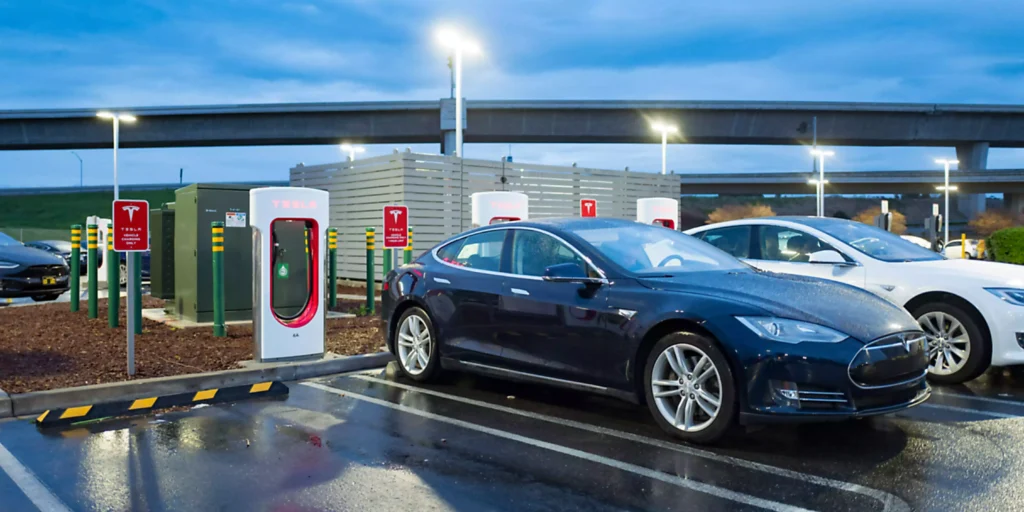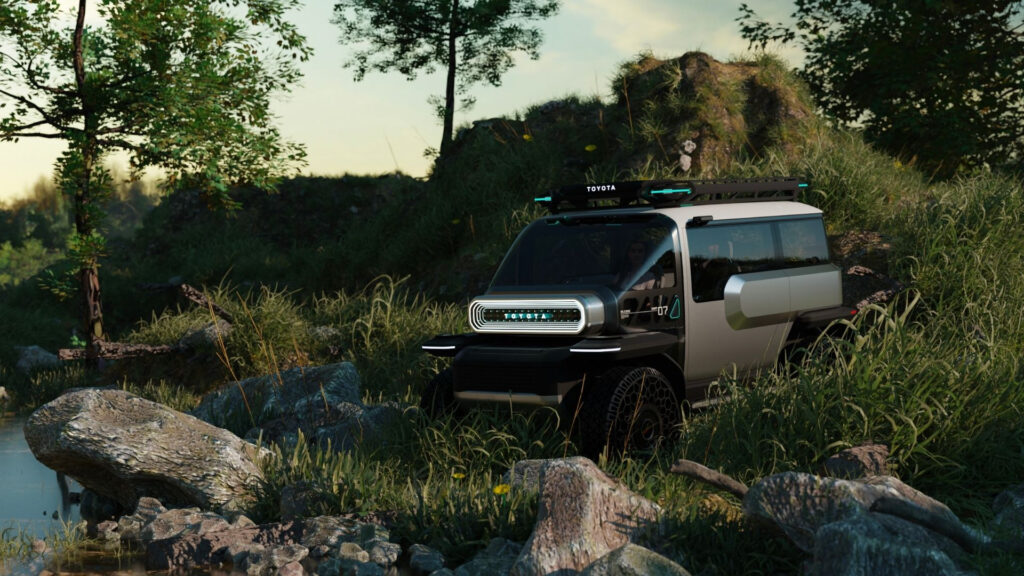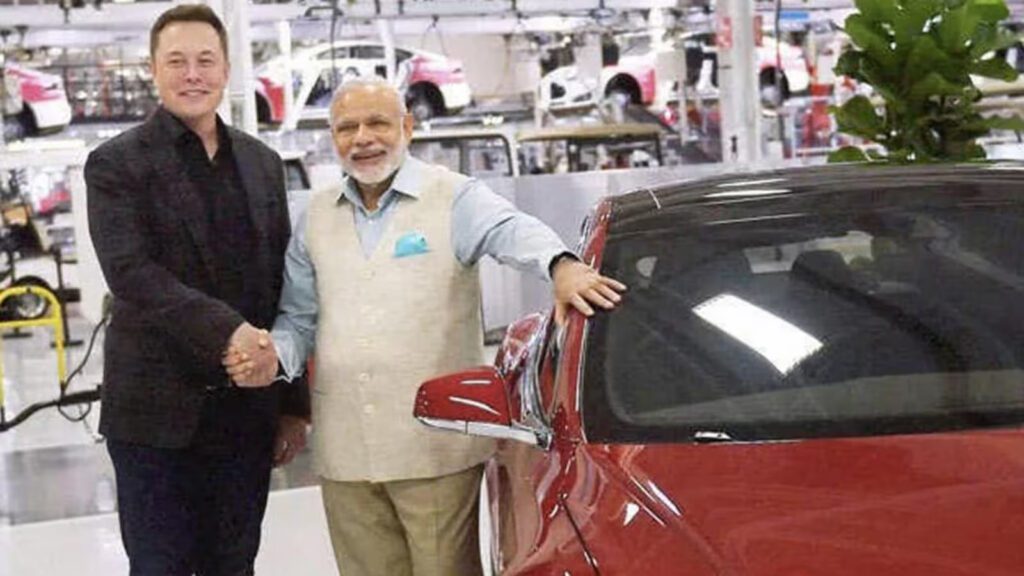On Thursday, the CEOs of the two manufacturers announced an unusual partnership: Ford Motor will work with Tesla on charging initiatives for its current and future electric vehicles.
Starting early next year, current Ford owners will be able to utilize an adaptor to gain access to over 12,000 Tesla Superchargers located throughout the United States and Canada. In addition, by mid-decade, Ford plans to have its next-generation electric vehicles equipped with Tesla’s charging port, allowing Ford customers to use Tesla’s Superchargers without an adapter.


During a live, audio discussion on Twitter Spaces, Ford CEO Jim Farley and Tesla CEO Elon Musk unveiled the efforts. This is a response to Tesla’s dominance in the electric vehicle market, which Ford hopes to catch up to and eventually surpass by increasing the production of its completely electric vehicles.
Ford sold 61,575 completely electric vehicles in the United States in 2018, putting it in second place behind Tesla, which continues to have a commanding lead in the EV market.
Farley stated that the business is “totally committed” to the NACS single charging standard for the United States, which would include the Tesla plug connector. Ford’s next-generation electric vehicles might or might not keep the CCS charging connectors found on their predecessors. There is “this option available to us,” a Ford spokeswoman said, “but we have no news to share today.”
Ford’s charging prices, according to a different spokesperson’s statement to CNBC, “will be competitive in the marketplace.” Companies will provide more information as the 2024 release date approaches.
Read More: Volvo Cars fund dcbel’s Bidirectional EV Charging
Tesla Breaks Down Its Charging Monopoly
Open access to Tesla’s private network has previously been considered. In February, White House officials revealed that Tesla has agreed to make 7,500 of its charging stations available to electric vehicle customers using other brands by the end of 2024. The company’s U.S. chargers were originally designed for, and only worked with, Tesla’s EVs.
Approximately 45,000 Supercharger connectors are available at 4,947 Supercharger Stations throughout the world, as stated in Tesla’s first-quarter shareholder deck. Revenue from the devices and the number of countries in which they are used are kept secret. Supercharging station earnings are accounted for in the company’s “services and other” category.
Farley and Musk’s Twitter Spaces meeting These two CEOs have a special rivalry, and Thursday will be their latest meeting. Despite their companies being direct rivals, they have each expressed respect and appreciation for each other.
Ford’s F-150 Lightning, an electric variant of its perennially popular trucks, will go into production in April 2022, a full year before Tesla’s Semi. Ford also heavily used the Tesla Model Y as a reference when designing the Mustang Mach-E crossover, and also followed Tesla’s lead when it came to discounting its electric SUV, the Model X.
However, Tesla, SpaceX, and Twitter CEO Elon Musk have consistently commended Ford as a historic American enterprise, praising Ford for avoiding bankruptcy during the Great Recession while rivals General Motors and Chrysler filed for bankruptcy protection.
Farley stated, “Working with Elon and his team, I’m really excited for our industry and for the Ford customers,” echoing the sentiments of many on the Thursday call. Musk later returned the compliment: “It’s an honor to be working with a great company like Ford.”
Read More: Formula 1 Announces All New Female Driver Series, F1 Academy for 2023
Tesla’s New Roadster to Have 620-Mile Range, Three Motors
When Farley asked Musk about the status of the updated version of the Roadster, the company’s initial product, he was met with some resistance. In the autumn of 2017, Musk hinted at a new Roadster model. He said that it will have a range of 620 miles on a single charge and be powered by three motors.
He reaffirmed on Thursday that the new Roadster was still in the early stages of design.
While Ford has developed its own charging products for its business customers, automakers should explore working together on public charging infrastructure, Farley said at a Morgan Stanley conference on Thursday.
To paraphrase what Farley had to say, “It seems totally ridiculous that we have an infrastructure problem, and we can’t even agree on what plug to use,” as the Tesla charging socket is different from those used by other manufacturers. As one expert put it, “I think the first step is to work together in a way we haven’t, probably with the new EV brands and the traditional auto companies.”
FAQs
Ford is using Tesla charging tech because it is the most advanced and reliable charging technology available. Tesla’s Supercharger network is the largest and fastest charging network in the world, and it is constantly expanding. Ford believes that using Tesla’s charging tech will give its customers the best possible charging experience.
There are several benefits to using Tesla charging tech. First, Tesla Superchargers are very fast. They can charge an electric car from 10% to 80% in just 15 minutes. Second, Tesla Superchargers are widely available. There are over 30,000 Superchargers in the world, and they are constantly being added. Third, Tesla Superchargers are reliable. They are built to withstand the harshest conditions and they are backed by Tesla’s warranty.




